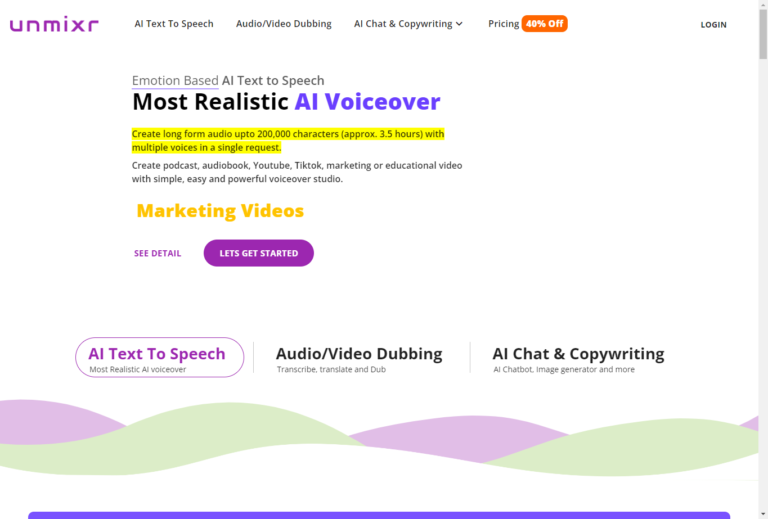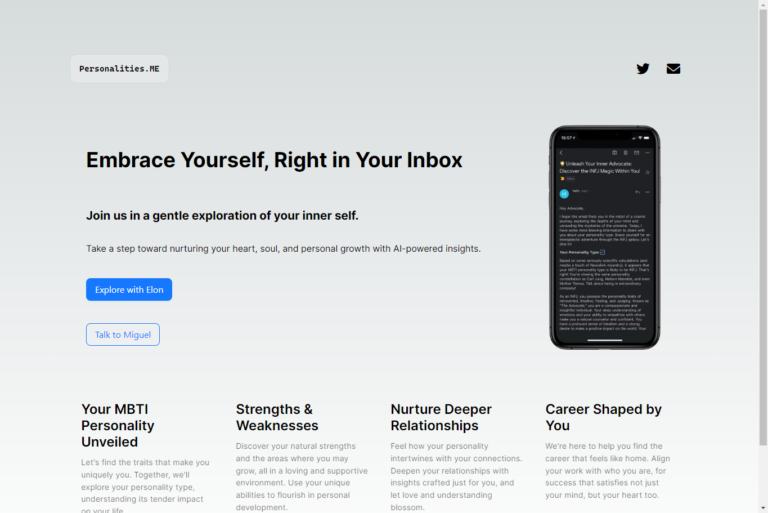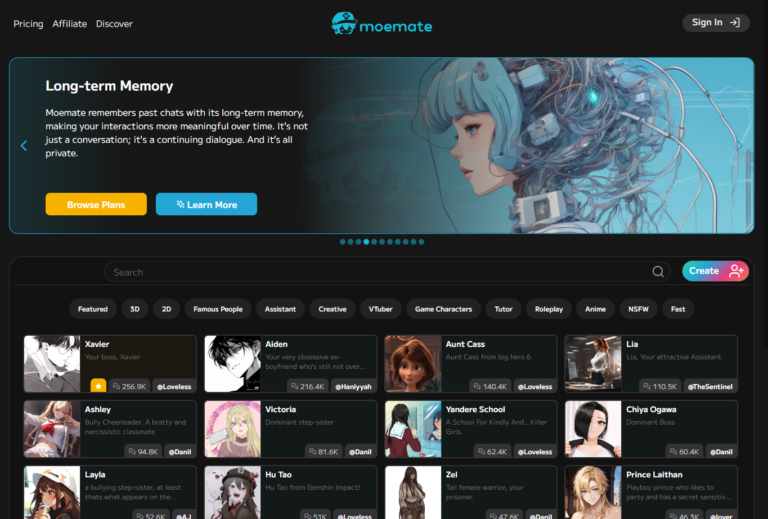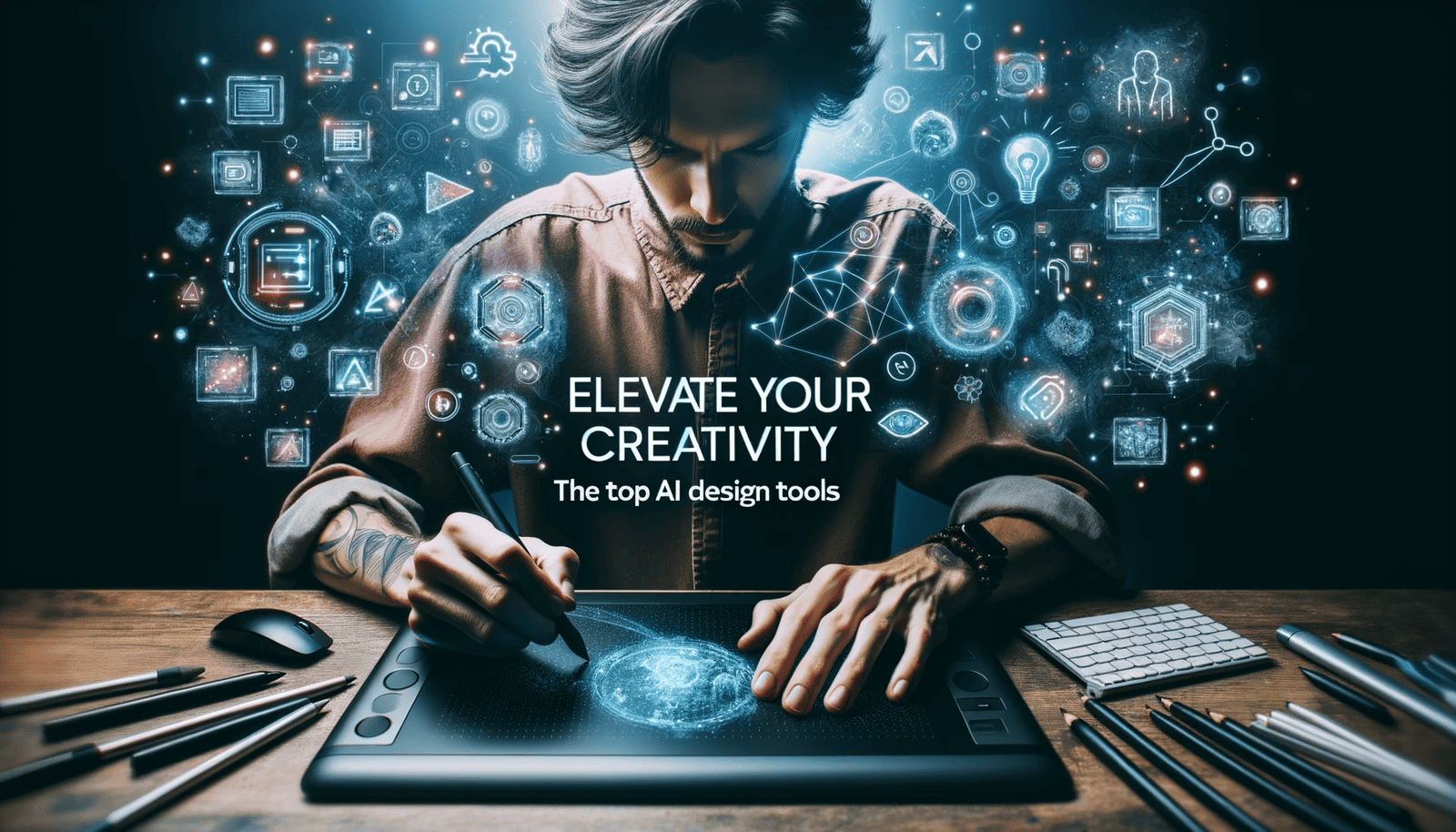
What are AI design tools?
AI design tools are AI-powered applications that harness artificial intelligence to enhance the graphic design process. Artificial intelligence (AI) emerges as a formidable force, propelling a multitude of sectors into a new era of innovation. One such domain basking in the AI renaissance is graphic design.
DALL·E has captivated the tech-creative nexus with its proficiency in bridging language and visual content generation, thus unlocking a myriad of possibilities in the creative and design arenas. By adeptly translating textual descriptions into compelling visuals, DALL·E is pioneering a blended realm where narrative and imagery coalesce, heralding a fresh narrative in design innovation.
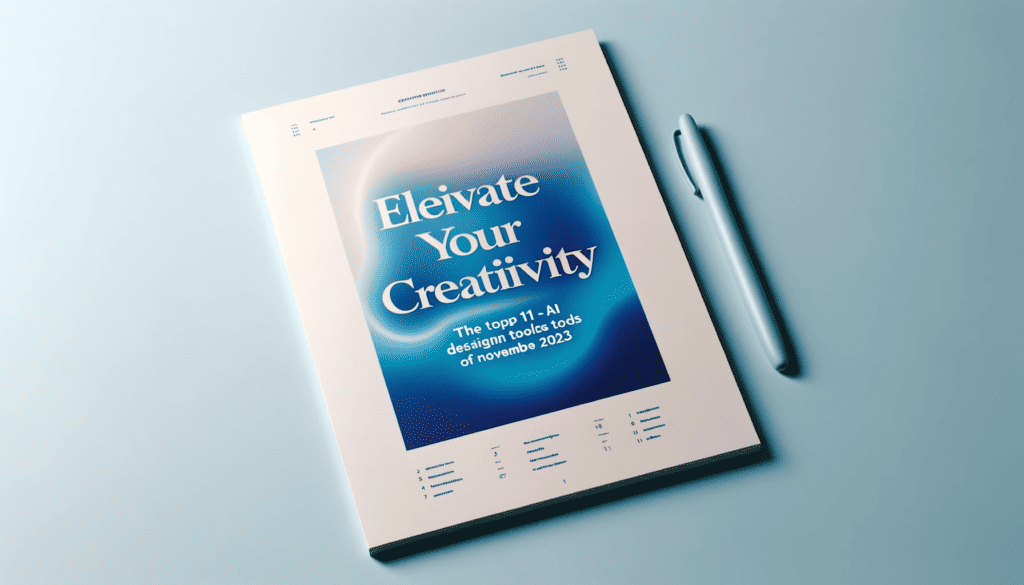
Five aspects of AI design tools that are redefining the graphic design paradigm are:
1. Automating Design Tasks:
AI design tools serve as catalysts for automating monotonous design chores. Tasks like image resizing, layout suggestions, or design concept generation that were once manual and time-consuming now witness a substantial acceleration. The tools, armed with AI, alleviate the tedium associated with repetitive tasks, thereby saving designers invaluable time and effort. This automation not only speeds up the process but also unleashes a higher level of precision.
2. Elevating Image Quality:
A prominent feature of AI design tools is their capability to enhance image quality autonomously. They are proficient in tweaking colors, contrast, and sharpness to optimal levels, transcending the limitations of manual adjustments.
Moreover, they exhibit a remarkable ability to extract backgrounds from images, facilitating a seamless integration of these images into diverse designs. This image enhancement is emblematic of how AI can magnify the visual appeal of designs.
3. Pioneering Content Generation:
Some avant-garde AI design tools extend their functionality to content generation, a boon for creating textual elements within designs or crafting marketing copy. By assimilating user inputs, these tools can autonomously churn out relevant and engaging content. This feature exemplifies the multi-dimensional utility of AI in not only enhancing visual aesthetics but also in fostering compelling narrative elements within designs.
4. Templated Customization:
Often, AI design tools come with a plethora of templates, laying a robust foundation for users to build upon. These templates are not rigid frameworks but a starting point. The AI algorithms analyze user preferences and suggest design elements and layouts, thus making template customization a breeze. This aspect underscores the AI’s ability to morph according to user preferences, making design a more interactive and personalized experience.
5. Streamlining Design workflows:
The integration of AI design tools into existing design workflows is seamless, creating a conducive environment for enhanced efficiency and rapid iteration on designs. The streamlined workflows fostered by AI equip designers with the agility to swiftly transition from conceptualization to execution, embodying a significant leap towards operational excellence.
In the digital age, the role of AI design tools has ascended to a pinnacle. Whether it’s creating engaging graphics for social media, designing user-friendly websites, or developing compelling logos, design is a crucial aspect of branding and communication. The marriage of artificial intelligence (AI) with design tools has further propelled this domain, making design an accessible and exciting venture for professionals and amateurs alike.
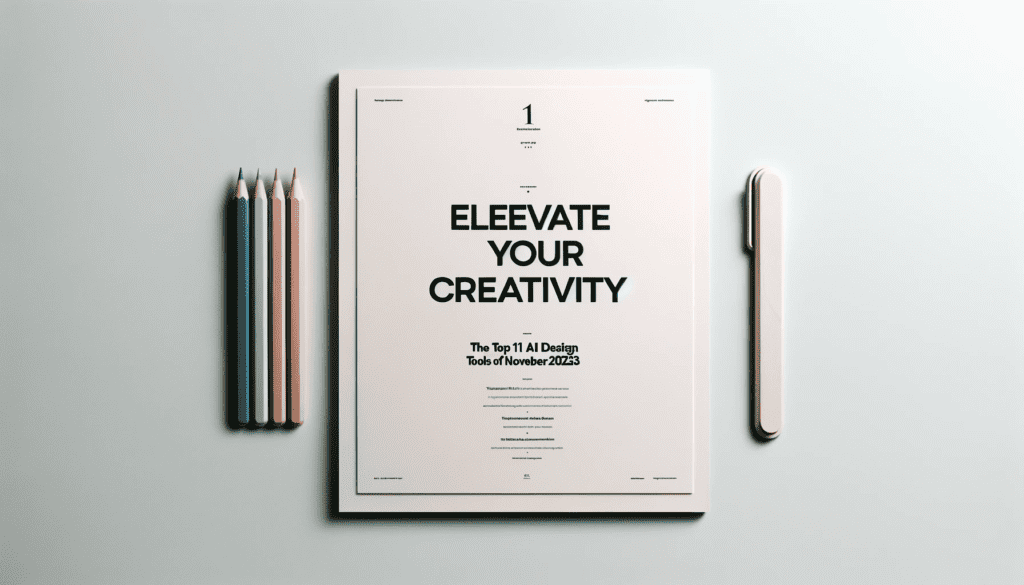
AI Design Tools: A New Horizon
The infusion of AI into design tools has fostered a new era of creativity. AI algorithms not only automate mundane tasks but also provide insightful recommendations, enhance the quality of design, and significantly cut down on the time required to go from concept to creation. Here we delve into 11 remarkable AI design tools that have been making waves in 2023.
1. Canva
- Description: Canva is a design tool revered for its user-friendly interface, making graphic design accessible to everyone.
- Features:
- Drag-and-Drop Editor: Create designs effortlessly with a simple drag-and-drop mechanism.
- AI-Powered Templates: Utilize AI-generated templates tailored to your brand.
- Photo Editing: Enhance your photos with a plethora of editing options.
- Pros:
- Suitable for both professionals and beginners.
- Extensive library of templates and assets.
- Cons:
- Limited advanced editing capabilities.
- Subscriptions are required for premium assets.
- Pricing: A free version available. Pro version at $12.95 per user/month.
2. Adobe Creative Cloud
- Description: An ensemble of professional-grade design, video, and photography tools powered by Adobe’s cutting-edge AI, Adobe Sensei.
- Features:
- Comprehensive Suite: Includes industry-standard tools like Photoshop, Illustrator, and Premiere Pro.
- AI-Enhanced Capabilities: Features like automatic tagging, image recognition, and smart editing.
- Cloud Storage: Easy sharing and collaboration with cloud-based storage.
- Pros:
- Professional-grade tools for serious designers.
- continuous updates and new features.
- Cons:
- Steep learning curve for beginners.
- Higher price point.
- Pricing: Plans start at $52.99 per month.
3. Sketch
- Description: Sketch is a vector-based design tool for Mac, widely used for designing interfaces, websites, and icons.
- Features:
- Vector Editing: Precision editing for vector graphics.
- Plugins: Extend functionality with a wide array of plugins.
- Collaboration: Real-time collaboration with colleagues
- Pros:
- Precise and professional-grade design capabilities.
- Active community and a plethora of resources.
- Cons:
- Exclusively available for Mac.
- Lacks some advanced features compared to competitors.
- Pricing: $99 per year with a free trial available.
4. Figma
- Description: Figma is a cloud-based design tool known for its real-time collaboration feature, making it a favorite among teams.
- Features:
- Real-Time Collaboration: Work simultaneously with team members on a design.
- Vector Networks: Advanced vector editing that goes beyond basic Bezier.
- Auto Layout: Automatically adjust your designs when resizing.
- Pros:
- Excellent for team collaboration.
- Robust vector editing tools.
- Cons:
- Could be overwhelming for new users.
- Some features might lag on low-performance devices.
- Pricing: Starter plan is free. Professional plan at $15 per editor/month.
5. Vectr
- Description: Vectr is a free, cross-platform tool that allows users to create vector graphics easily.
- Features:
- Intuitive Tools: Simple tools for creating and editing vector graphics
- Real-Time Sharing: Share your work with others with a unique URL.
- Cross-Platform: Available on Web, Windows, Linux, and Mac.
- Pros:
- Easy to learn and use.
- Free with no hidden costs.
- Cons:
- Limited advanced design features.
- No built-in collaboration features.
- Pricing: Free.
6. Design Wizard
- Description: Design Wizard is an online graphic design software known for its vast library of images and videos.
- Features:
- Extensive Library: Over 1 million premium images and illustrations
- Template Variety: A wide range of professionally designed templates
- Customization: easy customization of images and videos.
- Pros:
- Affordable pricing with a large asset library
- Simple interface.
- Cons:
- Limited advanced editing tools.
- No mobile application.
- Pricing: A free version is available. Pro plan at $9.99 per month.
7. Snappa
- Description: Snappa is an online graphic design tool geared towards digital marketers, bloggers, and small businesses.
- Features:
- Drag-and-Drop Editor: Easily create graphics without any design experience.
- Pre-Made Templates: Templates for social media, ads, blogs, and more.
- High-Res Stock Photos: Access to a library of high-resolution photos
- Pros:
- Quick and easy to use.
- No design experience is required.
- Cons:
- Lacks advanced editing tools.
- Limited font library.
- Pricing: A free version is available. Pro plan at $10 per month.
8. Placeit
- Description: Placeit by Envato is a simplistic design tool known for creating mockups, logos, and social media graphics.
- Features:
- Mockup Generator: Create mockups for shirts, mugs, devices, and more.
- Logo Maker: Quick and easy logo creation
- Video Maker: A simplified video maker for promoting brands
- Pros:
- No design skills are required.
- Extensive mockup library.
- Cons:
- Limited customization options.
- A subscription is required for unlimited access.
- Pricing: Starts at $14.95 per month.
9. Vectary
- Description: Vectary is a full-featured 3D design tool that operates in the cloud, allowing users to create 3D models and visuals with ease.
- Features:
- 3D Design and Modeling: Create 3D models from scratch or utilize the extensive library.
- Photorealistic Rendering: Achieve high-quality renders with realistic lighting and materials.
- Real-Time Collaboration: Team members can work together on projects in real-time.
- Pros:
- User-friendly interface suitable for beginners and professionals.
- Robust set of tools for 3D design and rendering.
- Cons:
- Some advanced features may require a subscription.
- Performance may vary based on internet speed.
- Pricing: Free version available. Premium plans start at $12 per month.
10. Photopea
- Description: Photopea is an online image editor, akin to Adobe Photoshop, that supports PSD, XCF, Sketch, XD and CDR formats.
- Features:
- Wide Range of Editing Tools: Offers tools for painting, vector graphics, retouching, and more.
- Format Support: Compatible with a variety of file formats, including PSD, GIF, and PDF.
- No installation is required. It runs in a web browser without the need for installation.
- Pros:
- Free to use with an option for an ad-free experience.
- Intuitive interface with robust editing tools.
- Cons:
- May lack some advanced features compared to desktop software.
- Ad-supported in the free version.
- Pricing: Free version available. Ad-free experience at $40 per year.
11. Pixlr
- Description: Pixlr is a cloud-based set of image tools and utilities, including a number of photo editors, a screen recorder browser extension, and a photo sharing service.
- Features:
- AI-Powered Editing: Utilize AI for background removal, upscale resolution, and more.
- Variety of Editing Tools: A wide range of tools for retouching photos, creating illustrations, and transforming images.
- Templates and Stock Images: Access a large collection of templates and stock images.
- Pros:
- Versatile and accessible from any device.
- Offers a quick and easy editing solution.
- Cons:
- Some features may require a subscription.
- The interface may not cater to advanced professionals.
- Pricing: A free version is available. Essentials plan at $4.90 per month.
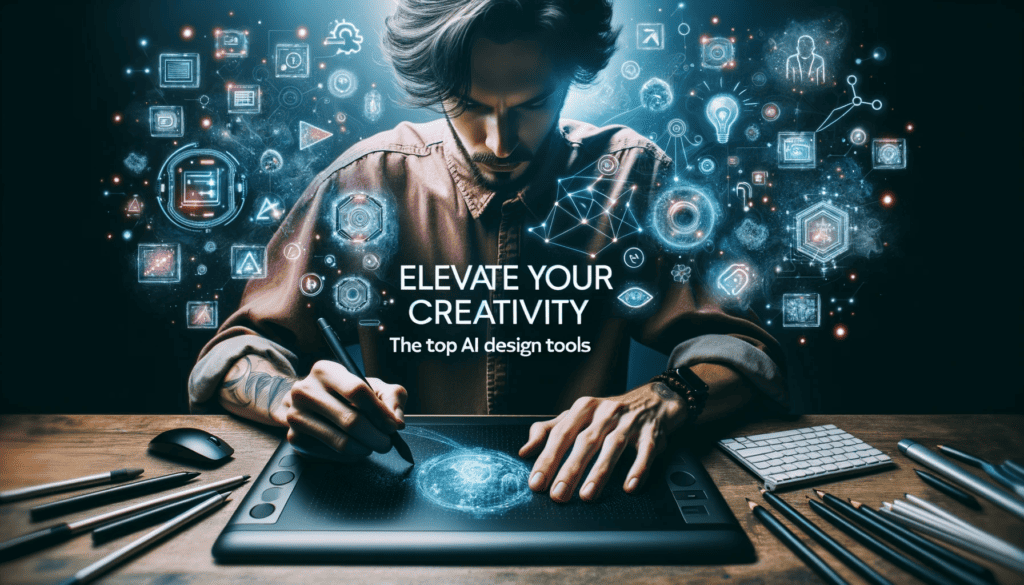
Reflecting On The Spectrum of Creativity
The array of AI design tools delineated above showcases the vast spectrum of creative possibilities that are now within arm’s reach. From crafting stunning graphics to developing intricate 3D models, these tools are democratizing design, ensuring that anyone with a spark of creativity can bring their visions to life.
The infusion of AI augments the design process, making it not only intuitive but also enriching. The intelligent features offered by these tools foster a collaborative and innovative environment, driving the design domain towards a future filled with endless creative exploration.
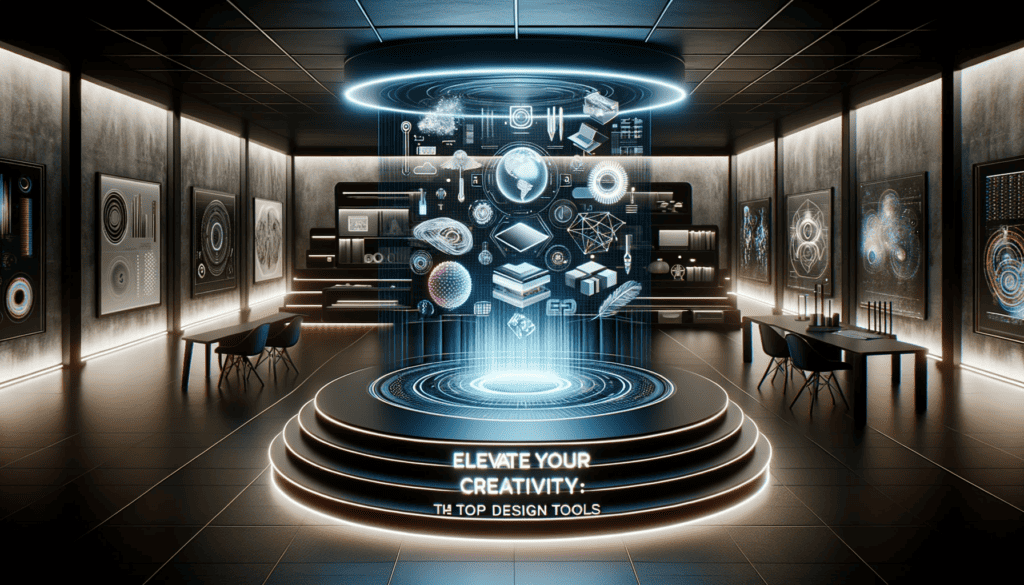
Are You Ready to Unleash Your Creativity?
With AI at your fingertips, the canvas is endless, and YOUR potential is limitless. As AI continues to evolve, the realm of design will witness a continual infusion of groundbreaking tools, each bringing forth a unique flavor of creativity.
The journey of exploration and creation is exhilarating, with each tool opening a new doorway to creativity. So, are you ready to embark on this enthralling voyage and unveil your unique design persona?
Conclusion
The realm of design has been revolutionized with the advent of AI, making the process more intuitive, insightful, and enjoyable. The above-mentioned tools are a testament to how AI can augment our creative abilities, providing a platform for both seasoned designers and novices to create mesmerizing designs. As AI continues to evolve, the synergy between artificial intelligence and design is bound to deepen, ushering in a new era of innovation in digital creativity.
The spectrum of AI design tools elucidated above manifests remarkable advancements in the design realm. From solo designers to collaborative teams, from beginners to professionals, these tools cater to a diverse user base. As we traverse further into the digital age, the alliance of AI and design tools will continue to flourish, making design an even more thrilling endeavor.
Navigating the Future
As AI continues to interlace with design, the potential for innovation burgeons. With tools becoming more intelligent and user-centric, the horizon of what can be achieved expands. The aforementioned tools are just the tip of the iceberg. As AI matures, we can anticipate a surge of groundbreaking tools that will redefine the essence of design.
Are you ready to navigate this exciting juncture of AI and design? With the right tool, your creativity knows no bounds.
Frequently Asked Questions (FAQs)
- How do AI design tools enhance creativity?
- AI design tools provide intelligent recommendations, automate repetitive tasks, and offer smart editing features that help enhance creativity by allowing more focus on the conceptualization and refining of designs.
- Are these tools suitable for beginners?
- Yes, many of these tools have user-friendly interfaces and provide tutorials and templates, which make them suitable for beginners.
- Is the investment in a premium AI design tool worth it?
- Investing in a premium AI design tool can be worth it if you require professional-grade design capabilities, collaborative features, and time-saving AI-enhanced functionalities that streamline the design process. It also depends how much you want to spend and accelerate your business.
- Which AI design tool is the best for beginners?
- Tools like Canva and Snappa are user-friendly and great for beginners. They offer a variety of templates and a simple interface to get started with.
- Can I use these tools for professional design projects?
- Yes, many of these tools like Adobe Creative Cloud and Sketch are equipped with professional-grade features suitable for complex design projects.
- How is AI transforming the design industry?
- AI is automating mundane tasks, providing intelligent recommendations, enhancing the quality of designs, and facilitating real-time collaboration, thereby revolutionizing the design industry.
- What are the free AI tools for design?
- These ten free AI tools websites, such as Canva,Snappa, Pixlr, Gravit Designer, Vectr, Crello, Figma, Easil, Design Wizard, Photopea, and , have democratized graphic design by empowering both professionals and beginners with innovative features and seamless user experiences.
Embarking on the voyage of creativity with the aid of AI is an endeavor filled with discovery. Each tool offers a unique palette of features, ready to cater to your design aspirations. Are you set to explore and create?
The augmentation of design tools with AI has indeed opened new horizons in digital creativity. As we advance, how do you envision the future of AI in design?

